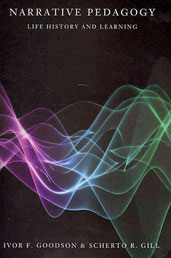Narrative Pedagogy
Learning and Narrative Pedagogy
Collaboration often appears to be chaotic as the teacher/facilitator and her group enter the narrative ‘maze’ of a person. We use the metaphor of maze to describe the often competing meanings and understanding of events that the narrator assumes in their own narration. The sorting out and ordering of events, although carefully thought through, might not have been presented by the narrator in ways that reflect their understanding, or may appear to not fully address the narrator’s struggles and dilemmas. This depends on each person’s narrative capacities and narrative character as discussed earlier. The key is to trust that at the end of this collaborative endeavour, new understanding of one’s life and new interpretations of events can be achieved as a result of intense conversation, dialogue, questioning, negotiating meaning and critical collaborative interpretation. This is often when the most extended discussion and debate takes place and therefore the most chaotic part of the process.
One way for the facilitator (educator/teacher) to lead a group through such a narrative maze is intense listening as proposed by John Dewey in what he termed ‘listening–in-conversation’. Waks (2010, p. 5) defines such listening as transactional listening and writes:
This distinct kind of listening is not understood in terms of separate, fixed poles of speaker and listener, ready-made speaker contents, and even ready-made vocabularies. As he (Dewey) puts it, “When A and B carry on a conversation together the action is a trans-action: both are concerned in it; its results pass, as it were, across from one to the other”, an image that suggests electrical currents that connect the two poles in a single circuit. In this connected form of listening the receptive sides of the transactions are also active and aim-directed, and the active sides are also receptive. The listening is constructive, in that the participants, their communication contents, and even their very vocabularies, are all constructed or re-constructed in conversational give and take.
Dewey construes humans as living creatures who, by virtue of prior biological and social conditioning, seek new enjoyments and renewals in each transaction.
Intense listening allows the facilitator and others in the group to enter the same circuit of narrative encounter and enter the reciprocal relationship we discussed earlier in this chapter. In this way, listening-in-conversation allows the narrative to be co-constructed in the conversation and collaboration. Thus the key to facilitation is to encourage intense listening and for the teacher/facilitator to model intense listening too.
